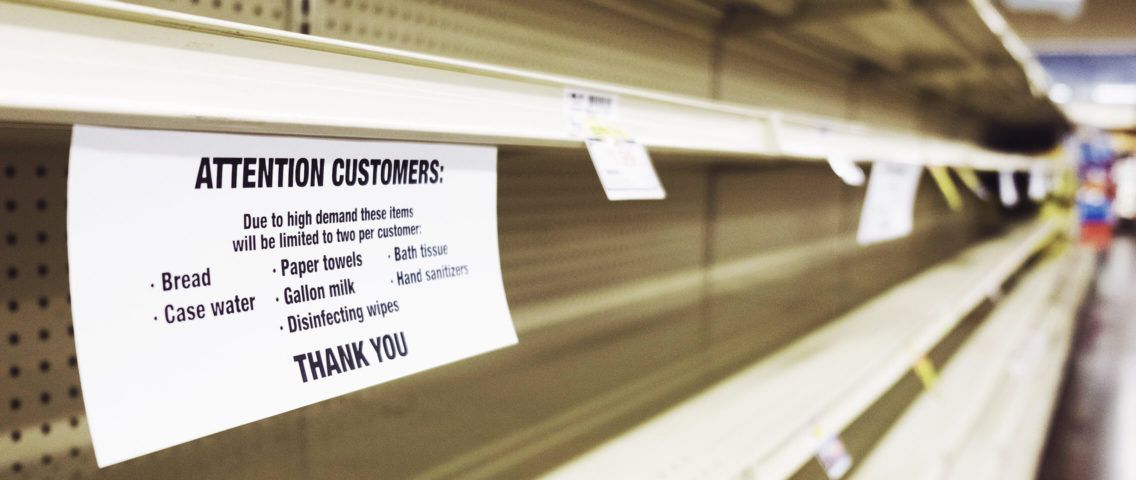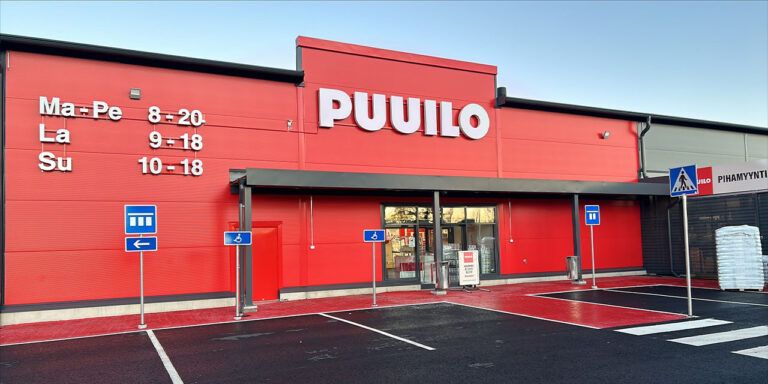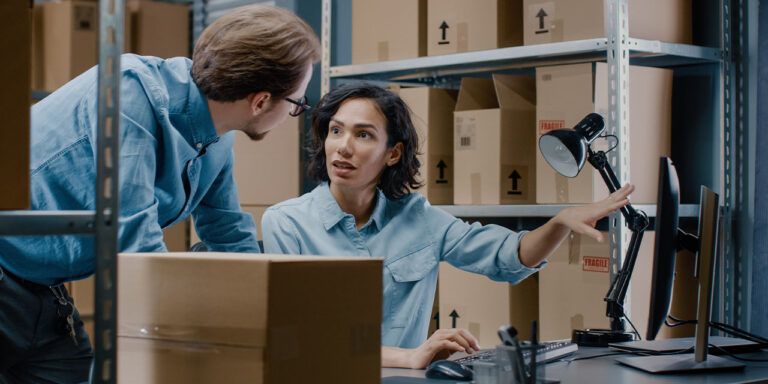Q&A: Demand forecasting when demand goes crazy
Mar 30, 2020 • 6 min
This article was originally published in Winsight Grocery Business.
The surge in shopping due to the coronavirus was a jolt to a retail supply chain that, for many retailers, has evolved through advanced technology to intelligent replenishment systems meant to provide stores only with what they need at a given moment—and was quickly overwhelmed by panicked shoppers.
In an interview with WGB, Michael Falck, co-founder of AI-driven supply chain software company Relex, discusses how retail can now use the same technologies to recover. Finland-based Relex provides demand forecasting software to companies such as Ahold Delhaize, 99 Cents Only Stores and the Canadian food retailer Farm Boy. The interview excerpted below was conducted by phone March 17.
Jon Springer: For a company like yours, what have these last two weeks looked like?
Michael Falck: It’s been pretty hectic. It’s easier to say in hindsight, but based on the numbers and the available information, I can’t help thinking that myself, and a lot of other people, should have seen this coming by mid-February at the latest. But I didn’t, and I guess a lot of people didn’t either.
In terms of our customers, a lot of grocery retailers have seen huge demand, especially in certain product categories, but almost across the board. The salad bars and delis have been or will be closed down, so some products are seeing a surge in demand and others are going out completely.
For specialty retailers we work with, the long-term effects will be even bigger. In February, everybody was talking about the supply side challenges—especially companies with supply chains that are a bit more complicated, such as China, with long leads [and] worried about not getting enough products. Now, most of them are now thinking about dealing with nobody actually wanting to buy their products.
Incredible. So when an extraordinary event like the coronavirus comes and consumers are making a huge run on powdered milk, bread and hand sanitizer, how do you adjust for that?
Temporarily, everybody will be overwhelmed. It’s partly, I guess, because of [companies like] us—I’m joking. But all the supply chains have been somewhat trimmed already. Nobody is keeping lots of lots of inventory in excess, because [if they had], they would have been out of business already years and years ago. So the short-term effect is that everybody will be overwhelmed.
But the good thing on the grocery side is that a lot of the items are actually fairly local and produced locally, and even if they aren’t, the goods flow in grocery will continue working. And so there will be, and has to be, short-term stock-outs, most of the companies are going to be able to deal with them. Coming back to AI and forecasting, it’s not like something like this has happened in recent history. If you want to go back, you have to go all the way to 1918, which doesn’t make much sense. It wouldn’t be applicable.
We have been dealing with extreme weather effects and incorporating local weather information into our forecasting model, so of course we can be here pretty quickly to start helping our customers with analytics and seeing what products and what categories move. It should be quite evident even without the statistics actually, for most professionals.
I don’t want to downplay algorithms and AI, but in situations like this, it’s not just that you have enough data to be able to augment the process. The most important thing is, if you have good technology and better solutions, you are better able to handle any disruptions in your demand or supply chain, especially something on the order of magnitude like this.
So you would anticipate that retailers using advanced replenishment and demand software are going to be able to better withstand the extraordinary changes in the volumes that they’re doing?
Yes. All retailers will deal with this to some extent, but anybody who has better solutions and technology will be able to handle it with less manual effort. We are working with one large multinational retailer where we are in the middle of a rollout. They are working with our solution in some of their countries, and in some other countries, it’s still planned. And their request, actually is, “Can we speed up this implementation?” Because it requires so much more manual work in the countries where they haven’t proceeded with the rollout.
We’ve spoken about there being any number of benefits that will flow from companies getting a better handle on their demand forecasting, can you talk about that?
From the supply chain perspective, why I like it so much, is that it’s easy to quantify and see the KPIs: Your availability, inventory and shrink, and the hours used for shelving and goods handling.
What we want to do with better demand forecasting and inventory projection is to hit the right balance between good availability, fresh goods and reducing shrink. And at the same time, ensuring that the flow to the shelf can be optimized so that we minimize the touch on the goods through the supply chain. The financial implications and impacts can be really significant.
Are retailers learning things they might not have known had they done this another way?
A couple of important things. In normal business, even managing fresh goods if everything goes by as usual is a lot of easier. But that’s not the life of a typical retailer. So you have weather effects; promotions, where when you promote one item, you cannibalize another item; and combine that, for example, in categories like meat, where if you have cutting in the stores, you need to be deciding on recipes [to offer] because that affects how you do the cutting. So, everything goes together. If you decide to promote one item, you may be selling less of another, and based on that, you need in the meat category to decide on how many primals and subprimals you order or ship to stores.
What other challenges are retailers facing today, in general, that a solution like yours can address?
Workforce optimization. Shelving makes up 80% of the work in stores, so if you have a fairly accurate forecast and a good idea on inventory projections, you can actually optimize your workforce. And the effect on your bottom line can be even bigger.
The same goes for space: Making sure you’ve allocated enough space for your product based on a day-level or even more granular forecast, ensuring that your plan-o-grams and space are in sync with how often you deliver certain categories to the store, and be sure everything you deliver gets right onto the shelf.
You’re speaking to me from Helsinki. Are you facing the same restrictions on movement and social gatherings that we are facing here in the U.S.?
It started a couple days earlier here. Unfortunately, this is something that I believe will be needed for longer than people expect at the moment.
What’s the food retailing situation in Finland?
Food retailing is actually pretty good. We’ve seen the same kind of effects you are seeing in the U.S., but the retailers have been able to cope. Toilet paper is produced here locally—it would not be efficient to ship it in in large quantities. The good news for grocery retailers is though there will be challenges, most, if not all of them, will see an increase in their business and will ride through the crisis smoothly, even thinking of some of the pessimistic scenarios out there.
I’m getting the sense there will be huge volume increases, but the mix will change.
The mix changes for sure. There will be less deli and salad bars, with those things going away and being packaged instead. And then the online deliveries are booked out. That can be one of the long-term implications: It’s not that the increase in online hasn’t been happening all the time, but this is something that can speed that up quite a lot. People are getting used it, even older people can get used to online ordering and deliveries.
Is that a good thing? One of the fears we hear is that the phenomenon will train people to do their shopping online. Each one of those sales incurs costs that a trip to the store does not, and so there’s concern whether stores can support the profitability effects that a larger percent of sales going online will have.
It’s a change that’s been going on already, and it’s only speeding up. This is something that retailers would have had to deal with anyway.



